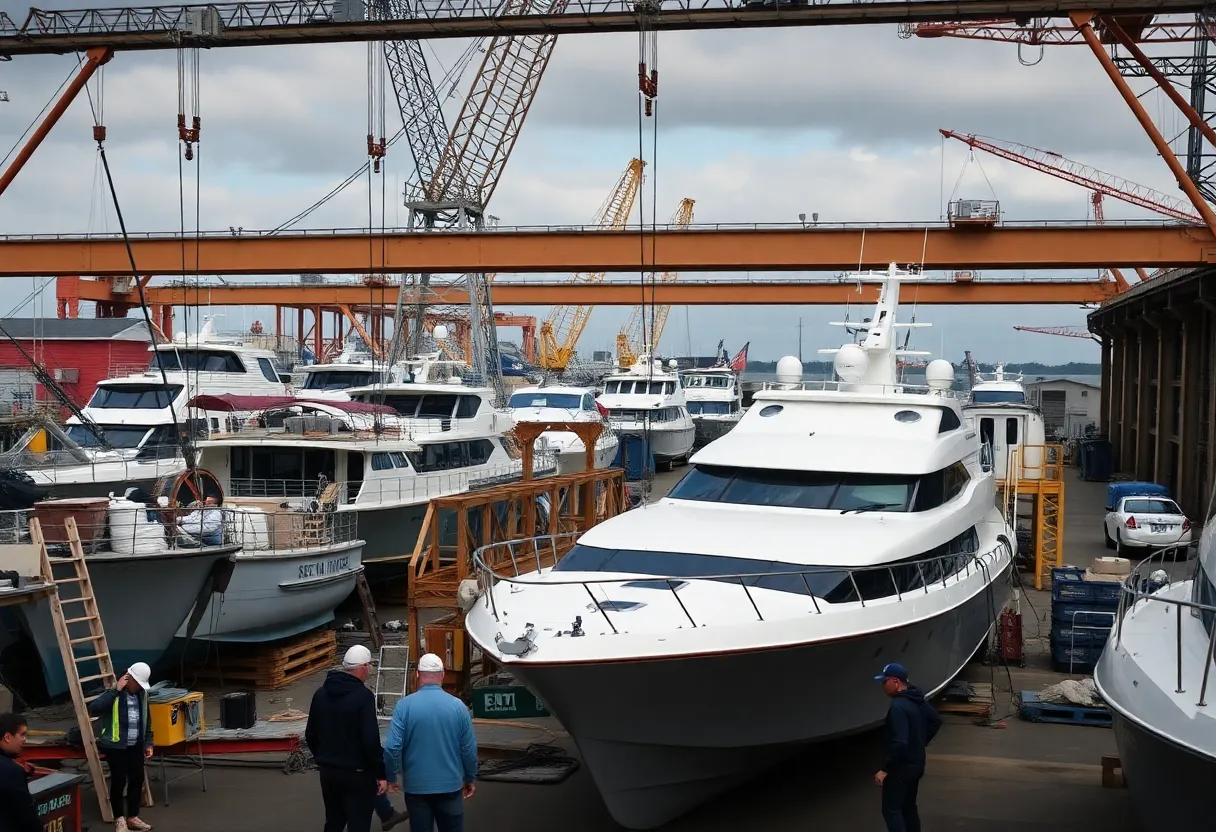New Orleans, September 24, 2025
Naval architecture thrives in New Orleans, where local shipyards shape the industry. This article highlights the pathways and skills of local architects, revealing the hands-on experience that fuels the city’s economy and builds maritime talent. From academic beginnings to real-world project management, discover how New Orleans maintains its maritime heritage in a bustling waterfront environment.
Big Boats, Bigger Stories: A Local Look at Naval Architecture Right Here in New Orleans
If you walk the levees or cruise past the shipyards on the Mississippi, you already feel how much shipbuilding is stitched into New Orleans. Let’s cut to the chase and talk about what goes on behind the steel and rivets, told from the viewpoint of a local who knows the yards, the bosses, and the stubborn reality of building things that float. This is a practical, down-to-earth snapshot of a naval architect’s path — one that reflects the kinds of careers born and bred in our city.
From University of New Orleans to the Yard: The Local Career Path
A degree from the local university can get you straight into the action. That’s the route taken by a naval architect who started with an internship and worked steady up the ladder. The progression from intern to engineer, to senior structural roles, and into naval architecture shows a typical arc in the region’s maritime trades. Along the way, responsibilities deepen: structural engineering turns into whole-vessel design, and design turns into managing teams and projects across shipyards.
What stands out for New Orleans is the hands-on nature of the work. Experience in local shipyards often includes decking out vessels for commercial service, prepping boats for offshore work, or repairing everything from tugs to complex government boats. That on-the-job learning is part of what makes this city a hub for marine talent.
What These Professionals Actually Do — Plain Talk
If you’ve ever wondered what a naval architect in New Orleans spends their days doing, here’s the practical list: design and draft vessels using CAD, run structural and stability analyses, oversee construction and repairs, manage budgets and schedules, and coordinate with vendors and inspectors. Add in stakeholder meetings and the occasional sea trial, and you get a sense of the variety. Many are also involved in environmental compliance and safety procedures — not glamorous, but essential.
Locally, shipbuilders and naval architects are expected to wear many hats. One day might be spent on detailed engineering; the next could be resolving supply chain delays, conducting inspections, or training junior staff. If you like variety and problem-solving, this is the kind of job that keeps you sharp.
Why New Orleans Matters for Shipbuilding
New Orleans is a working waterfront. The city’s geography and industry create steady demand for marine engineering, repair, and new builds. Shipyards here support local jobs, and the knowledge base is deep. When a project needs real-world experience — like offshore systems, vessel commissioning, or complex repair planning — local talent is ready. This is where experience meets deadline pressure, and that’s a recipe for learning fast.
Key Skills You’ll See on a Local Resume
Look for depth across technical and managerial fields. Typical strengths include:
- Structural engineering and naval architecture — practical design plus regulatory compliance.
- Project and budget management — turning plans into finished, paid-for vessels.
- Shipyard operations and team leadership — coordinating labor, equipment, and schedules.
- Repair, maintenance, and commissioning — keeping fleets ready and legal.
- Regulatory and environmental know-how — essential for modern builds and retrofits.
Tips for Locals or Visitors Curious About the Industry
If you live here or are thinking of visiting and want to see the waterfront beyond the tourist glitz, aim for guided, official tours where available. Respect yard safety rules if you’re near operations. And if you’re considering a career, think apprenticeships or internships — those routes feed directly into jobs and often lead to long-term careers in the area.
For anyone curious about the workforce behind the waterfront, remember that many professionals in the industry have multi-year stints at several firms: from small local shops to larger yards. That varied experience is normal and valuable, and it keeps New Orleans resilient in the face of the industry’s ups and downs.
Bottom Line
Shipbuilding here is about grit, technical chops, and community. The path from student to senior engineer is paved with hands-on work, long schedules, and a lot of collaboration. For New Orleanians, that means steady, skilled jobs and plenty of local expertise keeping boats moving — and that’s something the city relies on more than most visitors realize.
Frequently Asked Questions
What is a naval architect?
A naval architect designs and analyzes ships and marine structures, focusing on stability, strength, and seaworthiness. They often work with structural engineers, systems engineers, and shipyard crews.
How does shipbuilding affect New Orleans’ local economy?
Shipbuilding and repair support jobs in engineering, skilled trades, logistics, and supply chains. The industry feeds local employment and brings in contracts that sustain yards and ancillary businesses.
Can visitors tour shipyards in New Orleans?
Some yards provide official tours or public event days, but many operations are restricted for safety. Always check with the yard or a local visitor center for authorized visits.
What training or education is useful to get into this field locally?
Degrees in naval architecture, marine engineering, or civil/structural engineering are common. Internships, apprenticeships, and hands-on experience at local yards are extremely valuable.
Are shipbuilding jobs stable in New Orleans?
Work can be cyclical, tied to contracts and economic conditions, but the long-term presence of yards and port activity provides consistent opportunities for skilled workers.
At-a-Glance: Key Features Chart
This simple chart highlights core strengths you’ll find in a local naval architect’s experience.
| Feature | Depth | Visual |
|---|---|---|
| Structural Engineering | Extensive | █████████░ (90%) |
| Naval Architecture & Design | Strong | ████████░░ (80%) |
| Project Management | High | ███████░░░ (70%) |
| Shipyard Operations | Solid | ██████░░░░ (60%) |
| Regulatory Compliance | Comprehensive | ████████░░ (80%) |
| Client & Stakeholder Work | Experienced | ███████░░░ (70%) |
If you call New Orleans home or are planning a visit, take a minute to watch the river traffic and remember: every tug, barge, and excursion boat needed someone with engineering know-how to get it seaworthy. That’s the local story — big river, big jobs, and even bigger pride in keeping vessels moving.
Deeper Dive: News & Info About This Topic
HERE Resources
Eureka Naval Craft and Bordelon Marine Partner to Boost U.S. Military Shipbuilding
University of New Orleans Faces Recovery Challenges
Author: STAFF HERE NEWORLEANS WRITER
The NEW ORLEANS STAFF WRITER represents the experienced team at HERENewOrleans.com, your go-to source for actionable local news and information in New Orleans, Orleans Parish, and beyond. Specializing in "news you can use," we cover essential topics like product reviews for personal and business needs, local business directories, politics, real estate trends, neighborhood insights, and state news affecting the area—with deep expertise drawn from years of dedicated reporting and strong community input, including local press releases and business updates. We deliver top reporting on high-value events such as French Quarter Festival, New Orleans Jazz & Heritage Festival, and Essence Music Festival. Our coverage extends to key organizations like the New Orleans Chamber of Commerce and Greater New Orleans, Inc., plus leading businesses in energy, healthcare, and education that power the local economy such as Entergy, Ochsner Health, and Tulane University. As part of the broader HERE network, including HEREShreveport.com, we provide comprehensive, credible insights into Louisiana's dynamic landscape.




